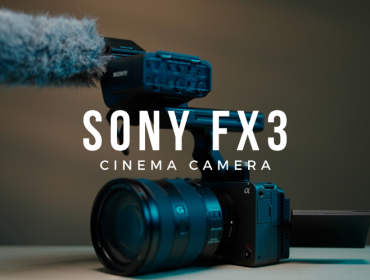The new Sony 14mm F1.8 G Master lens was perhaps the most surprisingly entertaining and dynamic lens I’ve had the pleasure of working with, and for more reasons than you might think. Few lenses have actually made me feel like a little kid playing with a new toy (with loud “wows” and “ahh’s” included), and this lens definitely did it for me.

Sony FE 14mm f/1.8 GM Lens ()
From the start, the new 14mm 1.8 is as light and compact as you’d want a lens of this magnitude to be (surprisingly small, actually). Even though it’s supposed to have a heavy front glass element, Sony has done a phenomenal job in balancing its weight and size ratio. Perfect for the given uses of wide angle lenses such as architecture photography and video, this lens’ new features (which I’ll get into in a bit) expand the creative possibilities of commercial, editorial and fine-art photographers like myself. Let’s get into it.
Aperture
The first thing I noticed about the new Sony 14mm was the obvious 1.8 aperture. That alone heightened my anticipation for bokeh with such a wide focal length (my honest thoughts: “will you even be able to tell?”). Trust me when I tell you, it exceeded my expectations immediately.


We brought in professional dancer Joel Kozik to test some creative angles for us. We began to shoot with a wide open aperture and a fast shutter. As you can see on this first image, although it has a super wide 14mm focal length, the bokeh on the top left is unmistakably there. Meanwhile, his body and eyes maintain a sharpness that cuts right through the image (thank you, Sony eye-autofocus).
For the second image, Joel was literally a few feet away from me, so you get an incredibly smooth and noticeable bokeh background, with a sharp face and noticeable hand gestures (a positive outcome of the incredibly wide focal length).
Distortion (or lack thereof!)
The second thing I noticed was the noticeable decrease of lens distortion on a lens this wide.

To test the lens distortion vulnerability, I did three sets of images. I first shot Joel framed doing a backflip on the right side of the image (above). With a lens this wide, my subject is usually incredibly warped (aka distorted). However, I was blown away at the fact that Joel was… still Joel in the image!

The second test was a “wow”, out loud moment for me. I had Joel do a trick amidst buildings surrounding him. From my experience shooting this kind of photography for commercial clients, I tend to shoot at 16mm, then crop in to decrease the distortions on the sides. This time, the full image was perfect. No distortion, no bending of architecture, and no more post-cropping! Yes.


The third test was to focus on architectural lines across the full image. I love telling stories using lines, shapes, and architectural textures to compose something that plays with the reality of street photography. Normally I tend to use standard or zoom lenses such as the 50mm, 85mm or the 70-200mm because they maintain the compositional lines and shapes intact. However, I was more than pleased with the outcome of my angle studies with this 14mm. Lines and shapes maintain their form with an almost mathematical precision. This allows me to truly maximize my subjects (the building wall and all its components) in ways I never considered before.
Sharpness
One thing Sony G master lenses are known for is sharpness.

To test the sharpness of this lens, I shot a very closed aperture levitation shot with a focus on Joel’s chest. As you can see from the image above, not only is his whole body pretty much as crisp as can be, but so is the background. Add the lack of distortion of this new 14mm into the mix, and you get an image that literally wouldn’t have been possible to take without this lens.

Conclusion
Needless to say, this lens has opened my eyes to the possibilities of utilizing a 14mm lens in more creative ways than I thought without being scared of the warping and distortion that have historically followed this focal length since its inception.
An immediate pleasure to use, this lens features aspects I thought couldn’t exist in a 14mm. Of course, Sony is known for stretching the possibilities of the conventional, and once again, they didn’t disappoint. I’d highly recommend this lens to commercial, dance, street, fine art, and editorial photographers. It’s also perfect for literally anyone who is looking to expand their eye in a way that has never been seen before. Trust me, you too will feel like a little kid with a new toy.
Thank you Adorama and Sony for letting me play with this lens, and Joel Kozik for your incredible levitation skills! You can find more on my angle studies, commercial work, and levitation photography at @erickhercules and @WeLevitate.
The Sony 14mm f1.8 G Master lens is available for preorder for $1,598.00 at Adorama.
Feature photo by Adorama






